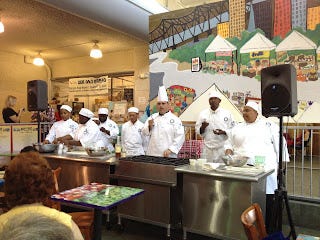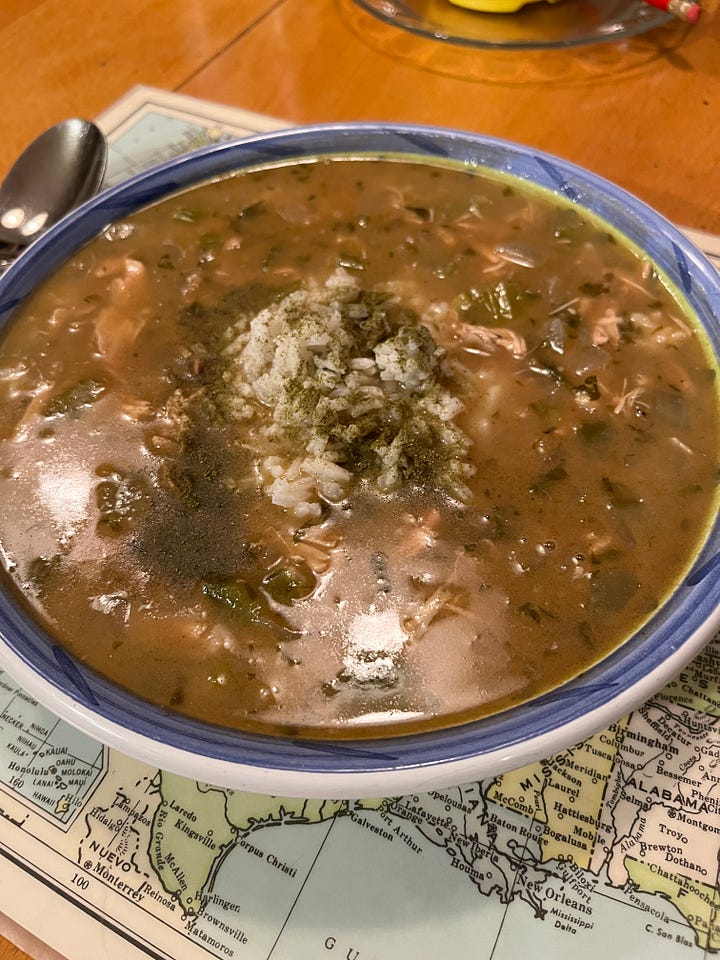Spice!
Using salt and pepper is one way to season food, but spice is a whole ‘nother matter.

My come-to-Jesus moment with spice occurred in the summer of 2012 when I designed and helped deliver a healthy lifestyle cooking camp program at Southern University in Baton Rouge to combat childhood obesity. The campers were middle school-aged and eager to learn cooking methods. I showed them how to chop vegetables and prepare rice for a vegetable stir fry dish on the first day and waited, as they tasted their finished dishes, for their response. They were silent as they sampled until one boy finally raised his hand and asked, “Do you have any Tony Chachere?” I honestly didn’t understand the question, and he repeated. I had no idea what he was talking about. One of the camp counselors slipped into the pantry and came back with a shaker, passed it around, and their eyes lit up as they sprinkled the familiar taste of home on their veggie dishes. Tony Chachere to the rescue!

Those kids were used to flavor. They were used to spice, the heat of peppers, the zing of salt. There was no way those vegetables were going to compare with what they were used to eating at home unless they were spiced up to suit the flavor profile they were accustomed to. The campers were there to learn but I was the one who had my eyes --and palate-- opened.


My three months in Baton Rouge provided another lesson—what it was like to live in a food desert. There was no grocery store nearby except for the limited foodstuffs available at a Dollar Store. Read—some milk and eggs but mostly packaged, highly processed foods without any vegetables at all.

The Red Stick Farmers Market on Saturdays was an oasis for me. Vegetables galore, live music and people dancing in the street, Shrimp ‘n Grits for breakfast, live chef demos through the morning. It was a weekly food celebration and I didn’t miss it.


The Cajun and Creole cuisine of Louisiana is the most complex regional food in this melting pot that is the United States. The combined influences of West African, French, Spanish, Italian, and Native American foodways created something unique and delicious. Coupled with the seafood bounty of the area’s Gulf Coast and the Southern dominance of pork for sausages, you can’t beat it. It is flavor. It is spice. It is fattening. You have to dance to shake off the pounds—but the regional music will have you stomping your feet and swinging your hips.
Thanks to those campers at Southern for showing me the light. Spice! It’s beyond salt and pepper and it makes les bon temps rouler.

Shrimp ‘n Grits
Makes 4 servings
4 cups water
1 cup stone ground grits
Salt and pepper to taste
2 tablespoons butter
2 tablespoons oil
1 pound ( 25-30 count) shrimp, peeled and deveined
1 cup minced scallions (these are called “shallots” in Baton Rouge)
4 cloves garlic, minced
4 tablespoons minced parsley (save a little for garnishing)
1 tablespoon lemon juice
1 tablespoon Cajun or Creole spice blend, optional
Hot sauce to taste
Place water and grits in a 2-quart saucepan and slowly bring it up to a boil, whisking occasionally until it gets thick, and then vigorously while it boils for a minute. Remove heat and season with salt and pepper to taste and add the butter. Heat 2 tablespoons oil in a sauté pan and add the shrimp when hot. Stir and cook until just pink and firm to the touch. Add the scallions, garlic, parsley, and lemon juice and stir it. Hit it with some Cajun spice-bam!-if you like. Pour the grits into a large shallow bowl and top with the shrimp and a sprinkle of parsley. Serve with hot sauce on the side.


